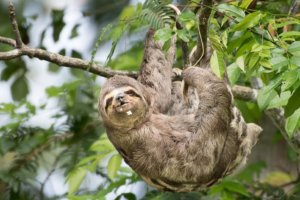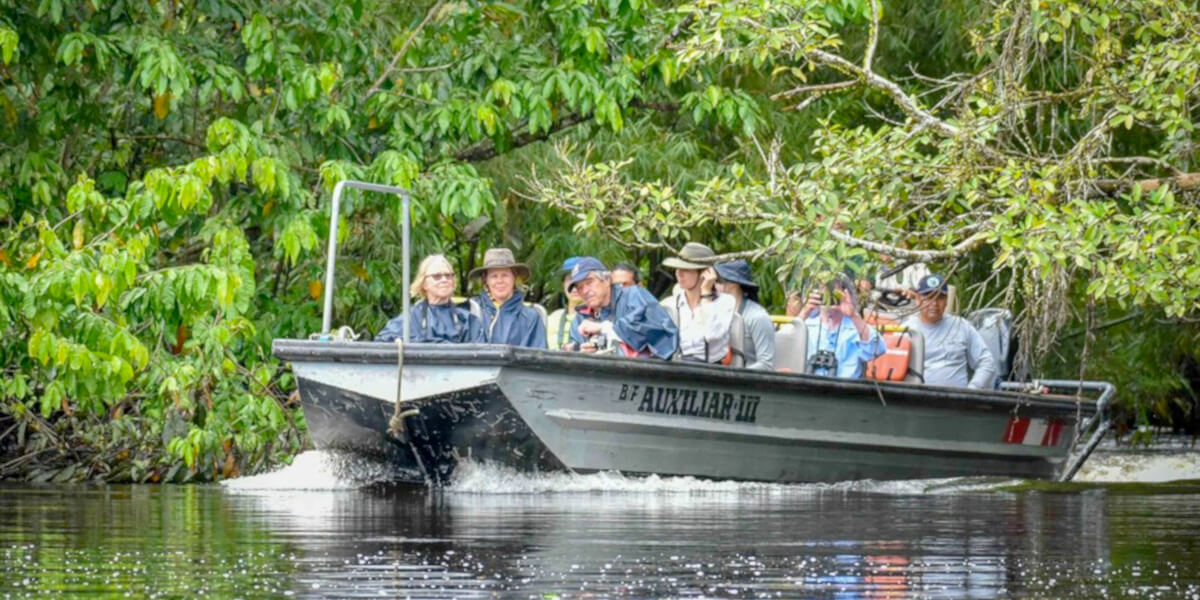Casual Trail and Nauta Creek
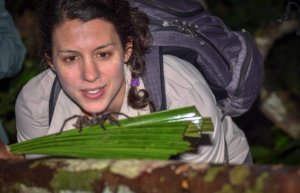
After breakfast, we had the opportunity to hike in Casual Trail. During the hike, the local guides of Casual spotted the many creatures for us, including a juvenile green anaconda, a red-tailed boa, diverse poison dart frogs, different species of tarantulas and many more!
Our afternoon activity was in Nauta Creek. Here we offered the option of kayaking in addition to our regular skiff exploration. The guests had a wonderful time exploring this striking area. The highlight of the excursion was a family of night owl monkeys that came out of their tree as if they wanted to spy on the visitors.
What a great way to begin our expedition through the Pacaya-Samiria National Reserve.
Yanayacu River and Amazon Natural Park
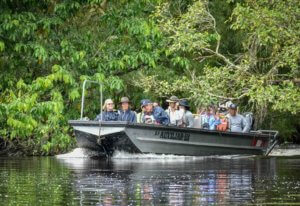
The gentle rain followed us during most part of the morning. This didn’t stop us from spotting lots of wildlife. We saw different species of macaws, reptiles, and the exploration through the várzea forest was spectacular. Our naturalist shared with us the survival strategies implemented by these trees, which allow them to thrive during the six months of flooding. Just amazing.
For our afternoon experience, we visited a private reserve called Amazon Natural Park. Here, after crossing a man-made lake, we reached a trail that went through a mature forest. The tall and emergent trees were home to different animals that we could hear as we walked along the trail. We arrived to an area made up of hanging bridges, and as we crossed them, we had a good perspective of the different layers of the forest.
Close to dusk, we returned to Delfin II and gathered in the lounge to share our thoughts of the day.
Amazona Community and Clavero Lake
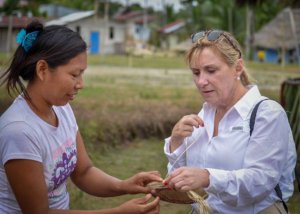
For the past ten years, a non-profit organization known as Minga Peru has been doing a great job in this village. They have trained women to become community leaders, to master the skills of making art crafts with chambira fiber and they also work with families to help them have their own fish farms and sustainable agriculture projects.
We spent the morning visiting several homes and learning a lot more about their lifestyle. It was a life-changing experience for each of our guests. At our departure, the ladies escorted us to the embarkation area and they waved us goodbye with big smiles.
In the afternoon, we explored Clavero Lake. We enjoyed seeing the Victoria giant water lilies. Some of those lilies were in bloom, and it was a spectacular sighting.
We cruised through several tributaries that feed Clavero Lake. Each of them was loaded with different species of birds, reptiles and primates. It was another wonderful example of the great biodiversity of the Upper Amazon.
Belluda & Dorado River
